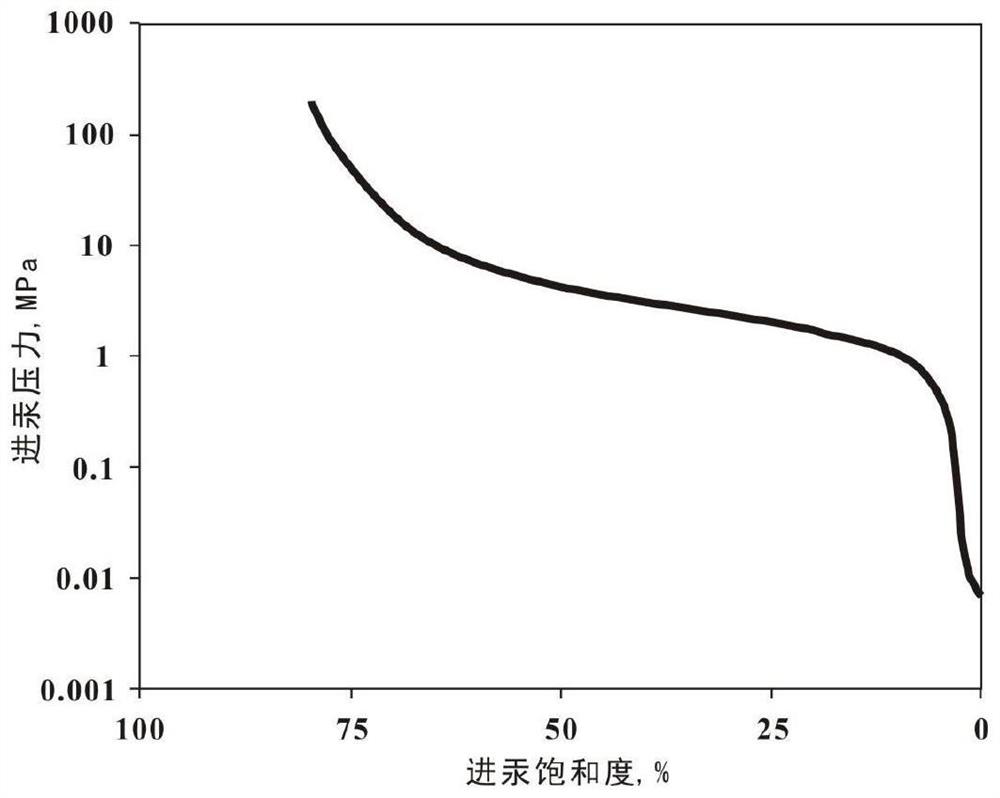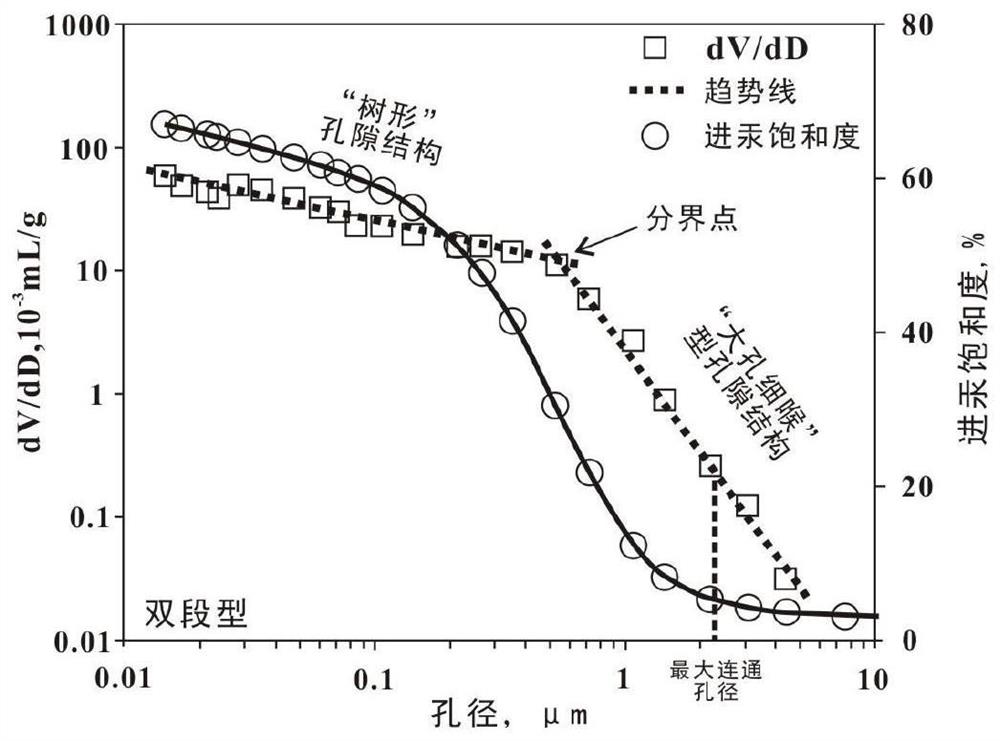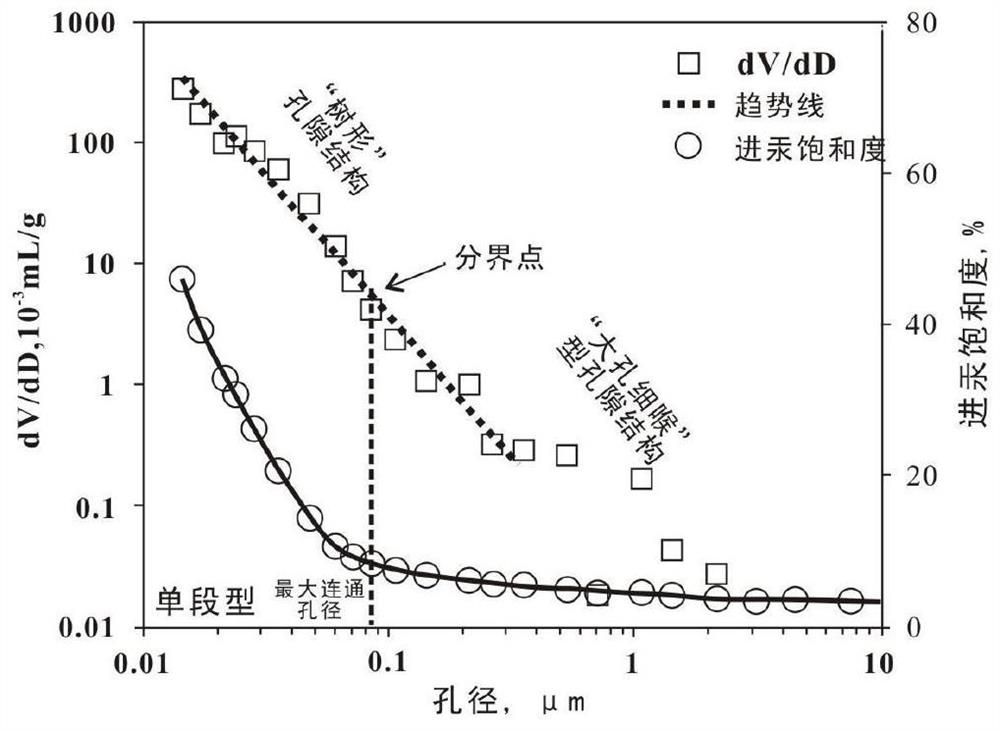A quantitative characterization method for different types of pore structures in tight glutenite reservoirs
A technique for quantitative characterization of pore structure, applied in measurement devices, permeability/surface area analysis, suspension and porous material analysis, etc., which can solve the problems of low efficiency, low resolution of cast flakes and SEM images, and difficulty in characterizing small pores and other problems to achieve the effect of overcoming low efficiency
- Summary
- Abstract
- Description
- Claims
- Application Information
AI Technical Summary
Problems solved by technology
Method used
Image
Examples
Embodiment 1
[0034] A quantitative characterization method for different types of pore structures in tight sandy conglomerate reservoirs, comprising the following steps:
[0035] (1) Drilling samples: According to the industry standard GB / T 29172-2012, on the full-diameter (core diameter: 12cm) core sample, select a location with a relatively uniform particle size, drill a diameter of 2.5cm, and a length between 3- 5cm standard column sample.
[0036] (2) Oil washing and drying: the rock samples were extracted and washed with a Soxhlet extraction device, and then dried in a vacuum kettle (105°C) to constant weight.
[0037] (3) Measurement parameters: measure the diameter and length of the rock sample, and calculate the sample volume v, in cm 3 , and measure the mass m of the rock sample, the unit is g, and calculate the apparent density ρ of the sample 视 , the unit is g / cm 3 ;According to the industry standard SY / T 6385-2016, using Boyle's law to measure the porosity of rock samples ...
PUM
| Property | Measurement | Unit |
|---|---|---|
| porosity | aaaaa | aaaaa |
Abstract
Description
Claims
Application Information
 Login to View More
Login to View More - R&D
- Intellectual Property
- Life Sciences
- Materials
- Tech Scout
- Unparalleled Data Quality
- Higher Quality Content
- 60% Fewer Hallucinations
Browse by: Latest US Patents, China's latest patents, Technical Efficacy Thesaurus, Application Domain, Technology Topic, Popular Technical Reports.
© 2025 PatSnap. All rights reserved.Legal|Privacy policy|Modern Slavery Act Transparency Statement|Sitemap|About US| Contact US: help@patsnap.com



